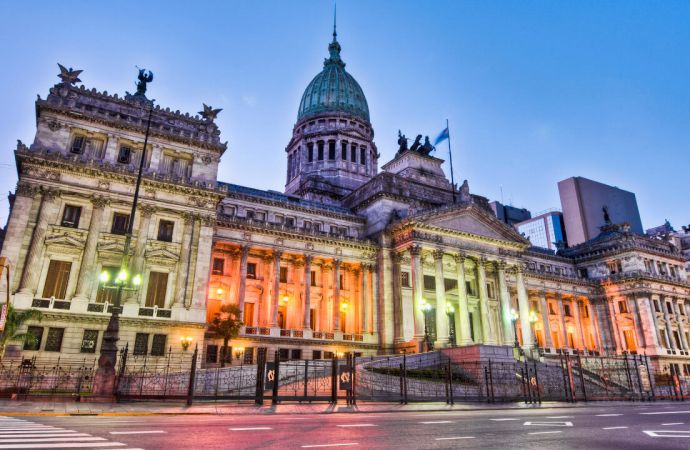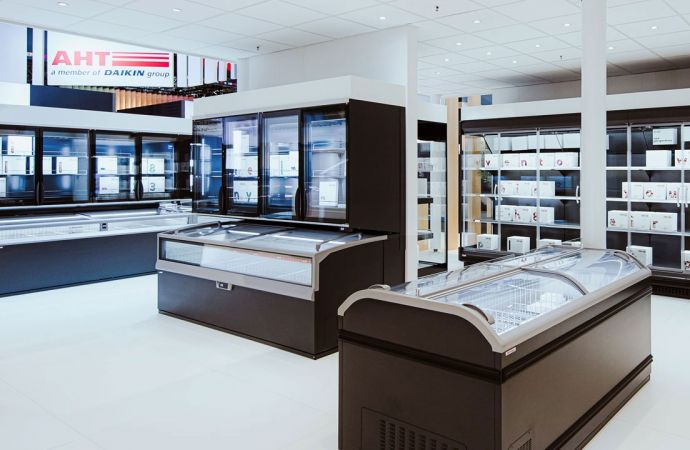In an exclusive interview, Takashi Obata of Panasonic Appliances Cold Chain Thailand sheds light on the company's plans to transition towards 100% hydrocarbons, with the support of the RAC NAMA initiative.

From left: Khumnuan Phenraksa, Pornkamon Kietmongkonkun, Takashi Obata, Weerachai Songthongkum and Yoshitaka Naito, all with Panasonic Appliances Cold Chain Thailand.
Japanese manufacturer Panasonic has already established itself as a global pioneer of CO2 refrigeration. Can the company also be a pioneer in hydrocarbons?
It’s starting to become one in Thailand, through Panasonic Appliances Cold Chain Thailand, based in the town of Chachoengsao, just east of Bangkok.
"As a global company, we believe that being able to respond flexibly to customer requirements is our most important proposition," said Takashi Obata, Managing Director of Panasonic Appliances Cold Chain Thailand. "That is why we should have, not only CO2, but also refrigerant options like propane [R290] or isobutane [R600a]."
Until recently, Panasonic Appliances Cold Chain Thailand mainly used R134a and R404a refrigerants for its refrigerated showcases, beverage coolers and ice cream freezers, targeted at the convenience store markets in Southeast Asia and Japan. However, in 2019, the company began transitioning towards full-scale production of equipment using R600a and R290.
"Freon alternatives still exist in Asia's cold-chain market, including Japan," said Obata. "However, amidst the need to reduce and transition away from freon use, we now think it is a situation where we must proceed with next-generation refrigerant product development in the next one to two years."
Panasonic Appliances Cold Chain Thailand is currently developing products that employ R600a. However, the company is considering the development of propane equipment in collaboration with the Oceania division of U.S. commercial refrigeration manufacturer Hussmann, which Panasonic acquired in 2015. These products are targeted at the Oceania market, which is fairly advanced in its adoption of environmentally friendly equipment, Obata said.
Help from RAC NAMAIn 2017, Panasonic Appliances Cold Chain Thailand’s manufacturing facility in Chachoengsao became the company's main factory, significantly increasing its production capacity for its commercial equipment. The expansion of its product line-up will continue to be a focus, along with an emphasis on safety, energy efficiency, and ease of maintenance, said Obata.
The company's Chachoengsao factory has been equipped with flammable-refrigerant charging equipment, with support from Thailand’s RAC NAMA (Thailand Refrigeration and Air-Conditioning Nationally Appropriate Mitigation Action) project, an international initiative to execute a transformation to green cooling in Thailand. In addition, the facility has set up a production line that can produce both propane and isobutane equipment in parallel.
In its efforts to transition towards hydrocarbon technology, Panasonic Appliances Cold Chain Thailand joins a number of other Thai manufacturers of refrigeration and air conditioning equipment making this transition with the support of the RAC NAMA project. (See "Pushing Natural Refrigerants in Southeast Asia" in the September 2019 issue and "The Cool Sees R290 as the Future" in the November/December 2019 issue of Accelerate Magazine).
So far, the company’s development of R600a products “is progressing," said Obata. Regarding R290, "the key will be how well the running costs for propane- based equipment can be managed and controlled,” he added. “However, in the mid to near-term future, I don't imagine we'll be dealing with R134a products. I believe we'll have switched almost 100% to hydrocarbons."
To that end, Obata believes it is essential for the business to thrive in the domestic Thai market, which has a big manufacturing base, as well as the commercial market. He also sees the need for a natural refrigerant subsidy scheme similar to Japan's or stricter freon regu- lations similar to Europe’s. In addition, Obata stressed that it is important to avoid creating friction with other local manufacturers, so "our idea is to protect and nurture the market while co-existing with the other local manufacturers," Obata said.
During the ATMOsphere Japan 2019 conference (organized by shecco, publisher of Accelerate Magazine), held in Tokyo in February, Panasonic announced that it would widen its focus on not only CO2 but hydrocarbons as well. "For us, from the standpoint of a manufacturer, the need to push ourselves towards new things is our mission," said Obata. "That push is represented by our capital investment in product development for isobutane and propane equipment. Now that everything is in place, it is time to take on that challenge."
Following Panasonic's development and success with CO2 systems globally, the company is now set to see its hydrocarbon-based equipment be adopted, not only in Southeast Asia and Japan, but potentially globally as well.
About RAC NAMA
The Refrigeration and Air-Conditioning Nationally Appropriate Mitigation Action (RAC NAMA) project is a Thai initiative aimed at initiating a sector-wide transformation towards the use of climate- friendly and energy efficient cooling technologies.
The NAMA Facility, a joint initiative of Germany and the U.K., commissioned the project to GIZ, Germany’s international coopera- tion agency, in April 2016; it runs until March 2021.
The project is being implemented in partnership with the Thai Government, represented by the Office of Natural Resources and Environmental Policy and Planning (ONEP) and the Department of Alternative Energy Development and Efficiency (DEDE). The Electricity Generating Authority of Thailand (EGAT) is host of the RAC NAMA Fund, the financial facility of the RAC NAMA project.
By promoting climate-friendly and energy-efficient cooling technologies based on natural refrigerants (green cooling technologies), the RAC NAMA project supports Thailand in reaching its energy savings and green-house-gas mitigation targets.
For more about the RAC NAMA project see "Transforming Thailand’s Cooling Sector with NatRefs" in the November/ December 2019 issue of Accelerate Magazine.
This article was originally published in the January 2020 issue of Accelerate Magazine.Related stories






